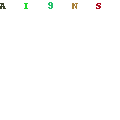The “nofollow” tag started out as an innocent piece of html. Over the last few years it has moved centre stage in the SEO world and it’s unlikely to leave anytime soon. As the general public become more SEO savvy, the blanket “nofollow” policy so prevalent today is going to be too crude.
The first big nofollow event was kicked off by Wikipedia. Being the authority site that it is, the value of an incoming link from the big W was extremely high and SEO’s started adding a lot of spammy content. It got so bad that the wiki retaliated with a site-wide “nofollow” on every single outgoing link from its site – nullifying any outgoing link juice.
Since Wikipedia’s big move, blanket no-follows are standard procedure for large sites – Twitter, Facebook, Blogger, Flickr… they all  do it. This hasn’t entirely been good news for Google. Their algorithm depends on the linkgraph and losing such valuable voters as wikipedia doesn’t help them. In fact – if we all wanted to end Google’s growing stranglehold on the Neb, the only thing every webmaster in the world need do is apply no-follow on every link. Google’s only option then would be to ignore nofollows and flow link juice regardless. Otherwise their Algo would be dead within 3 months. Google knows this of course, and some reputable SEO’s maintain that they are still passing some value from Wikipedia links. There’s been a lot of noise lately about the value of “citations” (as opposed to actual links) and maybe this is just one way the G is lessening its algo’s dependence on links.
do it. This hasn’t entirely been good news for Google. Their algorithm depends on the linkgraph and losing such valuable voters as wikipedia doesn’t help them. In fact – if we all wanted to end Google’s growing stranglehold on the Neb, the only thing every webmaster in the world need do is apply no-follow on every link. Google’s only option then would be to ignore nofollows and flow link juice regardless. Otherwise their Algo would be dead within 3 months. Google knows this of course, and some reputable SEO’s maintain that they are still passing some value from Wikipedia links. There’s been a lot of noise lately about the value of “citations” (as opposed to actual links) and maybe this is just one way the G is lessening its algo’s dependence on links.
In another move Google announced last year that on-page no-follows were no longer going to plug link juice leakage, a tactic used by SEO’s for pagerank sculpting. The reasons behind this move were murky, but to this author at least, it signals Google’s growing pre-occupation with how the nofollow is treated.
Incoming links will always be a currency in internet marketing. And the crude site-wide nofollows of large sites is not going to be nuanced enough for the future web. Take Flickr for example. I’ve been a pro member (25$ per annum) for over 4 years. I have loaded over a 1000 photos and a lot of these show up on Yahoo and Google image searches. All of my work is Creative Commons licensed, so I’m not after money for my photography. But it still pisses me that I can’t get one meagre little “follow” link back from my account (a PR4 for what its worth) in return for all the input. Very clearly I am not a spammer.
Companies need to get more sophisticated about how they handle nofollow. Google Knol has got it right I believe. They grade your account on several criteria and once you reach a certain “this-is-no-spam” level – they reward you for your efforts with a follow link. Rand Fishkin aired his view recently that more and more sites are going to start offering qualified “dofollow” links in return for participation. I agree wholeheartedly. Don’t be surprised if you start seeing blogs offering “dofollow” links to genuine contributors. I mean if most comments are moderated anyway, and presumably the spam ones deleted – why not make the vetted ones “dofollow”. Speaking of which – leave a worthy comment on this blog and I’ll give you a worthy link in return 😉